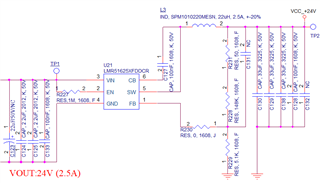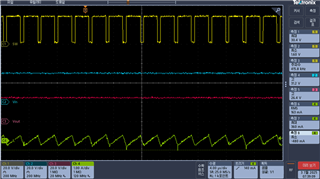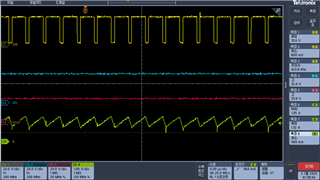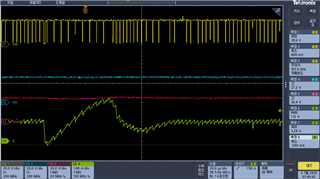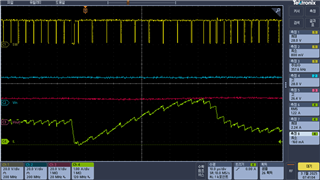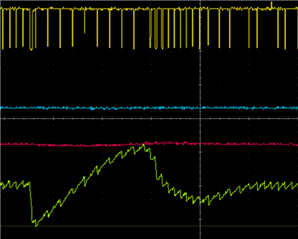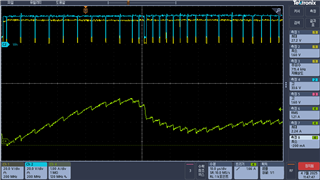Other Parts Discussed in Thread: , LM2576HV
Tool/software:
Hi
I'm testing a LMR51635EVM to apply our application.
Application block power condition is like below.
Test condition
Vin: 33VDC (24VAC/60Hz - Bridge rectifier - 33VDC)
Vout: 24VDC
Iout: Typical 1A / 2.5A at worst case
Inductor: 22uH
It is okay when the load is light, but when the load increases to more than 1A, a crackling sound occurs.
When the load increases to a maximum of 2.5A, the frequency of the sound increases, and in severe cases, LMR51635 malfunctions and Vout becomes inaccurate.
As the load increases, the ripple increases up to 3V and the minimum value is confirmed to be 27VDC.
When a voltage of 27VDC is applied to Vin, it seems that the load occurs when the gate driver is not fully turned on (Rds on increases), causing damage. Is that correct?
Is there a way to solve this other than reducing the ripple of Vin?
There is no problem when power is supplied to Vin with a DC power supply.


